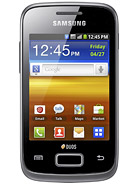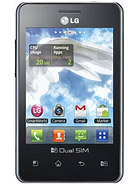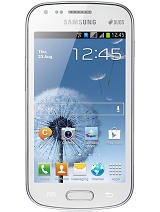Samsung Galaxy Ace Duos review: Pocket rockets
Pocket rockets
Final words
Dual-SIM solutions have always been popular - especially in markets with incomplete carrier coverage, where they're almost mandatory. They will be in even greater demand it seems, as emerging markets are ready to embrace affordable smartphones. Samsung are one of the few big name companies that cater to crowds looking for a budget dual-SIM solution with a proper smartphone platform.
And while the Galaxy S6802 Ace Duos bears the Ace name, the dual-SIM capabilities mean a more fitting comparison will be that to the Galaxy Y Duos, rather than the original Galaxy Ace which was released over a year and a half ago.
The Ace Duos has nonetheless very similar specs to the original Ace, but the less capable chipset takes a heavy toll on performance. With the Galaxy Y, Samsung compensated for the low speed by reducing the display resolution and screen size. With the Ace Duos, Samsung have again upped the resolution to HVGA, but the Broadcom BCM2155 processor from the Galaxy Y family clearly struggles to keep up.
While HVGA certainly looks better than the display of the Galaxy Y Duos, the sub-par performance is what it took to achieve it. Despite increasing the amount of RAM over the original Samsung Galaxy Ace, the Ace Duos actually performs worse in some of our benchmarks. And we're talking about a phone released in February of 2011 and even then only considered mid-range!
Which brings us to price. Currently, the Samsung Ace Duos retails around €180, while the Y Duos can be had for about €120. But are the somewhat higher specs worth paying an extra €60? Perhaps the most notable difference, besides screen quality, is the camera. The 5MP shooter on the Ace Duos handily beats out the 3MP one found on the Y Duos, and we won't even go into how terrible the QVGA video quality on the Y Duos is. One other important difference between the two is the more elaborate dual SIM management on the Ace Duos.
LG has just released a budget dual-SIM solution of its own, which looks to rival the ones from Samsung. The dual-SIM variant of the Optimus L3 has a smaller screen of QVGA resolution, less storage and RAM, and a smaller 3MP camera. It's powered by the Qualcomm MSM7225A and will most likely be priced lower as well, perhaps around the €120 mark to compete with the Y Duos.
There are also more advanced dual-SIM solutions in the works from Samsung, such as the Galaxy S Duos. It boasts a 4" WVGA screen alongside a full range of sensors and a front-facing VGA camera. It runs on a 1 GHz Qualcomm processor, and will even feature Android ICS. Unfortunately, with this kind of specs, the former flagship variant will most likely find itself in a higher price bracket than the Ace Duos.
So, should you get a Samsung S6802 Galaxy Ace Duos? If you're looking for a device that offers dual-SIM capabilities and Android alongside a good camera, there aren't that many options. The thing to consider is worse performance in benchmarks than its predecessor from over a year ago. On the plus side, the Ace Duos offers an advanced dual-SM solution, complete with fast data.
Overall, the Samsung Galaxy Duos isn't the fastest device around but it's targeting users with no basis for comparison. Anyone coming from a featurephone will be happy to keep discovering what their new smartphone can do for them. And it will already be time for you to upgrade by the time you discover that things can get done a lot faster, too.
Reader comments
- santosh
- 24 Oct 2017
- 7k7
Mobile network do not connected ..problem
- sk
- 03 Dec 2016
- KSv
Please repair this mobile soft were
- Bhundiya Nilesh
- 24 Nov 2015
- rKf
Updat versoin


